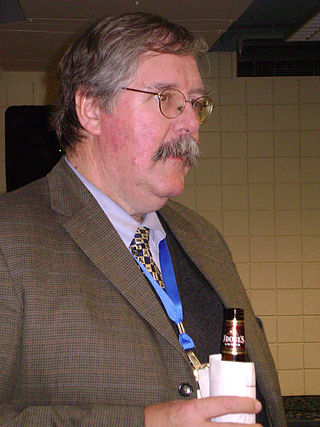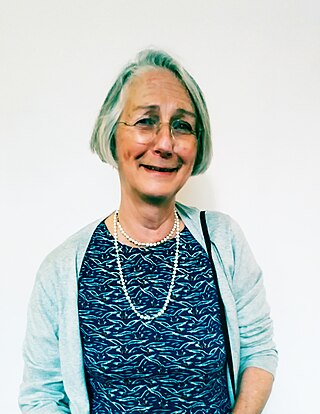
A markuplanguage is a text-encoding system which specifies the structure and formatting of a document and potentially the relationship between its parts. Markup can control the display of a document or enrich its content to facilitate automated processing.

Extensible Markup Language (XML) is a markup language and file format for storing, transmitting, and reconstructing arbitrary data. It defines a set of rules for encoding documents in a format that is both human-readable and machine-readable. The World Wide Web Consortium's XML 1.0 Specification of 1998 and several other related specifications—all of them free open standards—define XML.
XSLT is a language originally designed for transforming XML documents into other XML documents, or other formats such as HTML for web pages, plain text or XSL Formatting Objects, which may subsequently be converted to other formats, such as PDF, PostScript and PNG. Support for JSON and plain-text transformation was added in later updates to the XSLT 1.0 specification.
DocBook is a semantic markup language for technical documentation. It was originally intended for writing technical documents related to computer hardware and software, but it can be used for any other sort of documentation.

Aphrodisias was a small ancient Greek Hellenistic city in the historic Caria cultural region of western Anatolia, Turkey. It is located near the modern village of Geyre, about 100 km (62 mi) east/inland from the coast of the Aegean Sea, and 230 km (140 mi) southeast of İzmir.

The Text Encoding Initiative (TEI) is a text-centric community of practice in the academic field of digital humanities, operating continuously since the 1980s. The community currently runs a mailing list, meetings and conference series, and maintains the TEI technical standard, a journal, a wiki, a GitHub repository and a toolchain.
Apache AxKit was an XML Apache publishing framework run by the Apache foundation written in Perl. It provided conversion from XML to any format, such as HTML, WAP or text using either W3C standard techniques, or flexible custom code.
Encoded Archival Description (EAD) is a standard for encoding descriptive information regarding archival records.

The Digital Classicist is a community of those interested in the application of digital humanities to the field of classics and to ancient world studies more generally. The project claims the twin aims of bringing together scholars and students with an interest in computing and the ancient world, and disseminating advice and experience to the classics discipline at large. The Digital Classicist was founded in 2005 as a collaborative project based at King's College London and the University of Kentucky, with editors and advisors from the classics discipline at large.
The Leiden Conventions or Leiden system is an established set of rules, symbols, and brackets used to indicate the condition of an epigraphic or papyrological text in a modern edition. In previous centuries of classical scholarship, scholars who published texts from inscriptions, papyri, or manuscripts used divergent conventions to indicate the condition of the text and editorial corrections or restorations. The Leiden meeting was designed to help to redress this confusion.

C. Michael Sperberg-McQueen is an American markup language specialist. He was co-editor of the Extensible Markup Language (XML) 1.0 spec (1998), and chair of the XML Schema working group.
Digital classics is the application of the tools of digital humanities to the field of classics, or more broadly to the study of the ancient world.
The Greek-language inscriptions and epigraphy are a major source for understanding of the society, language and history of ancient Greece and other Greek-speaking or Greek-controlled areas. Greek inscriptions may occur on stone slabs, pottery ostraca, ornaments, and range from simple names to full texts.
Allen Ross Scaife was a Professor of Classics at the University of Kentucky.
The Music Encoding Initiative (MEI) is an open-source effort to create a system for representation of musical documents in a machine-readable structure. MEI closely mirrors work done by text scholars in the Text Encoding Initiative (TEI) and while the two encoding initiatives are not formally related, they share many common characteristics and development practices. The term "MEI", like "TEI", describes the governing organization and the markup language. The MEI community solicits input and development directions from specialists in various music research communities, including technologists, librarians, historians, and theorists in a common effort to discuss and define best practices for representing a broad range of musical documents and structures. The results of these discussions are then formalized into the MEI schema, a core set of rules for recording physical and intellectual characteristics of music notation documents. This schema is expressed in an XML schema Language, with RelaxNG being the preferred format. The MEI schema is developed using the One-Document-Does-it-all (ODD) format, a literate programming XML format developed by the Text Encoding Initiative.
Inscriptions of Aphrodisias was a project funded by the Leverhulme Trust and the British Academy that aimed to publish the inscriptions of the Greek ancient site of Aphrodisias online. Apart from aiming for a digital publication of the inscriptions, the experience from this publishing process was intended to be used for further development of the guidelines of the EpiDoc collaborative, on which the publication was based.

The Journal Article Tag Suite (JATS) is an XML format used to describe scientific literature published online. It is a technical standard developed by the National Information Standards Organization (NISO) and approved by the American National Standards Institute with the code Z39.96-2012.

Joyce Maire Reynolds was a British classicist and academic, specialising in Roman historical epigraphy. She was an honorary fellow of Newnham College, Cambridge. She dedicated her life to the study and teaching of Classics and was first woman to be awarded the Kenyon medal by the British Academy. Among Reynolds' most significant publications were texts from the city of Aphrodisias, including letters between Aphrodisian and Roman authorities.

Charlotte Roueché is a British academic who specialises in the analysis of texts, inscribed or in manuscripts, from the Roman, Late Antique, and Byzantine periods. She is particularly interested in those from the Asia Minor cities of ancient Ephesos and Aphrodisias. She is also interested in the interface between digital humanities and classical and Byzantine studies. She is Professor Emerita of Digital Hellenic Studies at King's College London, and Honorary Fellow of the Institute of Classical Studies, University of London.









